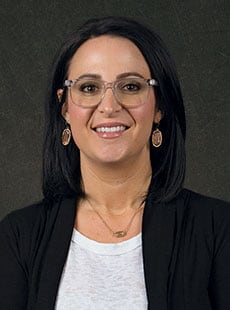 Course Introduction
Course Introduction
Core Standards of the Course
STRAND 1
Student will participate in personal and leadership development activities through SkillsUSA or another appropriate career and technical student organization.
Standard 1
Student will use communication skills to effectively communicate with others.
-
Understand when it is appropriate to listen and to speak.
-
Understand and follow verbal and written instructions for classroom and laboratory activities.
Standard 2
Student will effectively use teamwork to respectfully work with others.
Standard 3
Student will use critical thinking and problem-solving skills.
-
Analyze the cause of the problem.
-
Develop a solution to address the problem.
-
Implement the plan.
-
Evaluate the effectiveness of the plan.
Standard 4
Student will be dependable, reliable, steady, trustworthy, and consistent in performance and behavior.
-
Set and meet goals on attendance and punctuality.
-
Prioritize, plan, and manage work to complete assignments and projects on time.
Standard 5
Student will be accountable for results.
-
Use an achievement chart for activities and behaviors in class that encourages a personal evaluation of classroom performance.
-
File a regular written report on progress toward completion of assignments and projects.
Standard 6
Be familiar with the legal requirements and expectations of the course.
-
Be familiar with the course disclosure statement and all requirements for successful completion of the course.
-
Demonstrate workplace ethics, e.g. fair, honest, disciplined.
STRAND 2
Student will participate in work-place readiness activities.
Standard 1
Student will demonstrate employability skills.
-
Use a career search network to find career choices.
-
Write a resume including a list of demonstrated skills.
-
Write a letter of application.
-
Complete a job application.
-
Participate in an actual or simulated job interview.
Standard 2
Student will participate in a work-based learning experience outside the classroom.
STRAND 3
Students will understand general shop safety.
Standard 1
Learn safe working habits and procedures. Pass a safety test with 100 percent.
Standard 2
Review the different types and hazards of solvents used.
Standard 3
Review the different types, purposes, and hazards of automotive greases, oils, and additives.
Standard 4
Review precautions in the use, handling, and storage of various solvents, cleaners, oils, greases, and additives.
Standard 5
Review the gasses encountered in the diesel field and the hazards they present.
Standard 6
Review the hazards and control of asbestos dust.
Standard 7
Comply with safety rules for working with automotive chemicals (SDS).
STRAND 4
Students will inspect the General Electrical Systems and determine needed repair.
Standard 1
Research vehicle service information, including vehicle service history, service precautions, and technical service bulletins.
Standard 2
Demonstrate knowledge of electrical/electronic series, parallel, and series-parallel circuits using principles of electricity (Ohm's Law).
Standard 3
Demonstrate proper use of test equipment when measuring source voltage, voltage drop (including grounds), current flow, continuity, and resistance.
Standard 4
Demonstrate knowledge of the causes and effects of shorts, grounds, opens, and resistance problems in electrical/electronic circuits; identify and locate faults in electrical/electronic circuits.
Standard 5
Use wiring diagrams during the diagnosis (troubleshooting) of electrical/electronic circuit problems.
Standard 6
Measure parasitic (key-off) battery drain; determine needed action.
Standard 7
Demonstrate knowledge of the function, operation, and testing of fusible links, circuit breakers, relays, solenoids, diodes, and fuses; perform inspection and testing; determine needed action.
Standard 8
Inspect, test, repair (including solder repair), and/or replace components, connectors, seals, terminal ends, harnesses, and wiring; verify proper routing and securement; determine needed action.
Standard 9
Use appropriate electronic service tool(s) and procedures to diagnose problems; check, record, and clear diagnostic codes; interpret digital multimeter (DMM) readings.
Standard 10
Diagnose faults in the data bus communications network; determine needed action.
Standard 11
Identify electrical/electronic system components and configuration.
Standard 12
Check frequency, pulse width, and waveforms of electrical/electronic signals using appropriate test equipment; interpret readings; determine needed repairs.
Standard 13
Understand the process for software transfer, software updates, and/or reprogramming of electronic modules.
-
Research vehicle service information, including vehicle service history, service precautions, and technical service bulletins.
-
Demonstrate knowledge of electrical/electronic series, parallel, and series-parallel circuits using principles of electricity (Ohm's Law).
-
Demonstrate proper use of test equipment.
-
identify and locate faults in electrical/electronic circuits.
-
Use wiring diagrams during the diagnosis.
-
Measure parasitic (key-off) battery drain
-
Demonstrate knowledge of the function, operation, and testing of fusible links, circuit breakers, relays, solenoids, diodes, and fuses.
-
Inspect, test, repair (including solder repair), and/or replace components, connectors, seals, terminal ends, harnesses, and wiring.
-
Check, record, and clear diagnostic codes; interpret digital multimeter (DMM) readings.
-
Diagnose faults in the data bus communications network.
-
Identify electrical/electronic system components and configuration.
-
Check frequency, pulse width, and waveforms of electrical/electronic signals using appropriate test equipment.
-
Understand the process for software transfer, software updates, and/or reprogramming of electronic modules.
STRAND 5
Students will inspect the Battery System and determine needed repair.
Standard 1
Identify battery type and system configuration.
Standard 2
Confirm proper battery capacity for application; perform battery state-of-charge test; perform battery capacity test, determine needed action.
Standard 3
Inspect battery, battery cables, connectors, battery boxes, mounts, and hold-downs; determine needed action.
Standard 4
Charge battery using appropriate method for battery type.
Standard 5
Jump-start vehicle using a booster battery and jumper cables or using an appropriate auxiliary power supply.
Standard 6
Identify low voltage disconnect (LVD) systems; determine needed action.
Standard 7
Inspect, clean, and service battery; replace as needed.
Standard 8
Inspect and clean battery boxes, mounts, and hold-downs; repair or replace as needed.
Standard 9
Test, and clean battery cables and connectors; repair or replace as needed.
Standard 10
Identify electrical/electronic modules, radios, and other accessories that require reinitialization or code entry after reconnecting vehicle battery.
-
Identify battery type and system configuration.
-
Perform battery tests.
-
Inspect battery, battery cables, connectors, battery boxes, mounts, and hold-downs.
-
Charge battery using appropriate method.
-
Jump-start vehicle using a booster battery and jumper cables or using an appropriate auxiliary power supply.
-
Identify low voltage disconnect (LVD) systems.
-
Inspect, clean, and service battery.
-
Inspect and clean battery boxes, mounts, and hold-downs.
-
Test, and clean battery cables and connectors.
-
Identify electrical/electronic modules, radios, and other accessories that require reinitialization or code entry after reconnecting vehicle battery.
STRAND 6
Students will inspect the Starting System and determine needed repair.
Standard 1
Demonstrate understanding of starter system operation.
Standard 2
Perform starter circuit cranking voltage and voltage drop tests; determine needed action.
Standard 3
Inspect and test starter control circuit switches (key switch, push button, and/or magnetic switch), relays, connectors, terminals, wires, and harnesses (including over-crank protection); determine needed action.
Standard 4
Diagnose causes of no-crank or slow crank condition; differentiate between electrical and engine mechanical problems; determine needed action.
Standard 5
Perform starter current draw tests; determine needed action.
Standard 6
Remove and replace starter; inspect flywheel ring gear or flex plate.
-
Demonstrate understanding of starter system operation.
-
Perform starter circuit cranking voltage and voltage drop tests.
-
Inspect and test starter control circuit switches, relays, connectors, terminals, wires, and harnesses.
-
Diagnose causes of no-crank or slow crank condition; differentiate between electrical and engine mechanical problems.
-
Perform starter current draw tests.
-
Remove and replace starter; inspect flywheel ring gear or flex plate.
STRAND 7
Students will inspect the Charging System and determine needed repair.
Standard 1
Identify and understand operation of the generator (alternator).
Standard 2
Test instrument panel mounted voltmeters and/or indicator lamps; determine needed action.
Standard 3
Inspect, adjust, and/or replace generator (alternator) drive belt; check pulleys and tensioners for wear; check fans and mounting brackets; verify proper belt alignment; determine needed action.
Standard 4
Inspect cables, wires, and connectors in the charging circuit.
Standard 5
Perform charging system voltage and amperage output tests; perform AC ripple test; determine needed action.
Standard 6
Perform charging circuit voltage drop tests; determine needed action.
Standard 7
Remove, inspect, and/or replace generator (alternator).
-
Identify and understand operation of the generator.
-
Test instrument panel mounted voltmeters and/or indicator lamps.
-
Inspect, adjust, and/or replace generator (alternator) drive belt; check pulleys and tensioners for wear; check fans and mounting brackets; verify proper belt alignment.
-
Inspect cables, wires, and connectors in the charging circuit.
-
Perform charging system voltage and amperage output tests; perform AC ripple test.
-
Perform charging circuit voltage drop tests.
-
Remove, inspect, and/or replace generator.
STRAND 8
Students will inspect the Lighting Systems and determine needed repair.
Standard 1
Diagnose causes of brighter-than-normal, intermittent, dim, or no-light operation; determine needed action.
Standard 2
Test, replace, and aim headlights.
Standard 3
Inspect cables, wires, and connectors in the lighting systems.
Standard 4
Inspect cables, wires, and connectors in the charging circuit. Diagnose faults in tractor-to-trailer multi-wire connector(s), cables, and holders; determine needed action.
Standard 5
Diagnose faults in switches, relays, bulbs/LEDs, wires, terminals, connectors, sockets, and control components/ modules of exterior lighting systems; determine needed action.
Standard 6
Diagnose faults in switches, relays, bulbs/LEDs, wires, terminals, connectors, sockets, and control components/ modules of interior lighting systems; determine needed action.
Standard 7
Diagnose faults in switches, relays, bulbs/LEDs, wires, terminals, connectors, sockets, and control components/ modules of auxiliary lighting circuits; determine needed action.
-
Diagnose causes of brighter-than-normal, intermittent, dim, or no-light operation.
-
Test, replace, and aim headlights.
-
Inspect cables, wires, and connectors in the lighting systems.
-
Diagnose faults in tractor-to-trailer multi-wire connector(s), cables, and holders.
-
Diagnose faults in switches, relays, bulbs/LEDs, wires, terminals, connectors, sockets, and control components/modules of exterior lighting systems.
-
Diagnose faults in switches, relays, bulbs/LEDs, wires, terminals, connectors, sockets, and control components/modules of interior lighting systems.
-
Diagnose faults in switches, relays, bulbs/LEDs, wires, terminals, connectors, sockets, and control components/modules of auxiliary lighting circuits.
STRAND 9
Students will Inspect and Repair the Instrument Cluster and Driver Information Systems.
Standard 1
Check gauge and warning indicator operation.
Standard 2
Diagnose faults in the sensor/sending units, gauges, switches, relays, bulbs/LEDs, wires, terminals, connectors, sockets, printed circuits, and control components/modules of the instrument cluster, driver information systems, and warning systems; determine needed action.
Standard 3
Inspect, test, replace, and calibrate (if applicable) electronic speedometer, odometer, and tachometer systems.
-
Check gauge and warning indicator operation.
-
Diagnose faults in the sensor/sending units, gauges, switches, relays, bulbs/LEDs, wires, terminals, connectors, sockets, printed circuits, and control components/modules of the instrument cluster, driver information systems, and warning systems.
-
Inspect, test, replace, and calibrate (if applicable) electronic speedometer, odometer, and tachometer systems
STRAND 10
Students will Inspect and Repair the Cab and Chassis Electrical Systems
Standard 1
Diagnose operation of horn(s), wiper/washer, and occupant restraint systems.
Standard 2
Understand operation of safety systems and related circuits (such as: speed control, collision avoidance, lane departure, and camera systems).
Standard 3
Understand operation of comfort and convenience systems and related circuits (such as: power windows, power seats, power locks, remote keyless entry, steering wheel controls, and cruise control).
Standard 4
Understand operation of entertainment systems and related circuits (such as: radio, DVD, navigation, speakers, antennas, and voice-activated accessories).
Standard 5
Understand the operation of power inverter, protection devices, connectors, terminals, wiring, and control components/modules of auxiliary power systems.
Standard 6
Understand operation of telematics systems.
Standard 7
Diagnose faults in engine block and engine oil heater(s); determine needed action.
-
Diagnose operation of horn(s), wiper/washer, and occupant restraint systems.
-
Understand operation of safety systems and related circuits.
-
Understand operation of comfort and convenience systems and related circuits.
-
Understand operation of entertainment systems and related circuits.
-
Understand the operation of power inverter, protection devices, connectors, terminals, wiring, and control components/modules of auxiliary power systems.
-
Understand operation of telematics systems.
-
Diagnose faults in engine block and engine oil heater.


 UTAH EDUCATION NETWORK
UTAH EDUCATION NETWORK

 Justin
Justin Braxton
Braxton Dani
Dani Rob
Rob Val
Val
